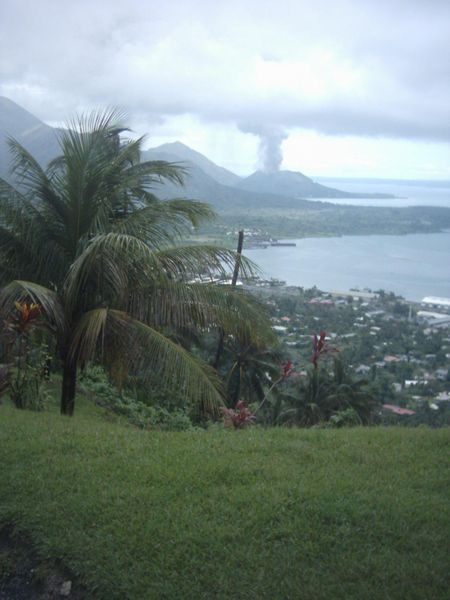
Perhaps the biggest gap in our plans to circumnavigate in the next few years is located in the south-west Pacific, the quite bloody large area between the teeming hordes of Indonesia and the "same but different" country/continent of Australia. Traveller and author Michael Moran's Beyond the Coral Sea: Travels in the Old Empires of the Southwest Pacific remedies this somewhat, or rather gives me a taste for going to the islands around and to the east of Papua New Guinea that I didn't know I had.
Think "tropical island paradise" and most Westerners think of Polynesia. Movies, TV and tales of HMS Bounty have inculcated a sense of flowers, bare-breasted young women free with their favours, and a life of leisure in which one might be roused to husk a coconut or spear a fish. Less prevalent is the idea of cannibalism, obscure magical rites and "the blackest people on Earth".
Welcome to the Solomon Islands, friend.
Moran describes Papua New Guinea (PNG) and the various Solomon, Bismarck and Trobriand Islands as the last frontier of European exploration and, inevitably, exploitation, and he's not wrong. The Melanesian cultures, almost immeasurably variable and yet seemingly linked in ways designed to appal the most imperialistic Eurocrat, proved an obdurate nut to crack for the cadres of missionaries sent to civilise and/or Christianize the locals, but this didn't deter the Germans, the Dutch, the British and finally the Australians for trying. The Japanese had a brief, destructive run during the '40s, but they didn't treat the Melanesians any better, and in some ways, considerably worse. The history of the constantly volcanic island of Rabaul encapsulates a place that not only saw outsiders in residence, but at war. The lava ate most of their works, anyway. Only crazy Aussies remain.
Just the history of "first contact" of PNG's vast coastline could make a book of itself alone: Being a "final frontier" attracted a passel of eccentric characters probably unsuitable for polite company in 19th century Europe and yet made a home (unless they dropped dead of fever or were eaten) in the very wild wilds of PNG's coast and interior...an interior, as Moran points out, still not entirely explored even today.
As the author relates with frequent ironic or funny asides, the cannibalism and pro-sex attitudes of Melanesia's array of tribes and linguistic groups were charted for a prurient Western audience by pioneering anthrologists like Bronisław Malinowski, who didn't necessarily get it right, but by bothering to live there at all with an eye not blinded by Western religion and mores, perhaps eased the transition of Melanesia into the world community simply by writing non-judgementally about it. Moran's relation of PNG's speech is most fascinating to a language buff like myself. The use of "pidgin" is everywhere: a creole language elevated to a lingua franca due to PNG's incredible diversity of native tongues, none of which have more than regional influence, it seems.
PNG and its islands are a new (1975) and sometimes uncertain country and Moran wonders if Western notions of democracy and governance can work there. So do many of the citizens, some of which question the existence of a Western form of governance in an arguably artificial nation made from bits that only colonialism has put in common. Nonetheless, PNG needs some collective voice, if only to regulate its continuing exploitation of its myriad natural resources by the nominally "civilized" world.
Moran observes that the slow dissolving of tribal ties cannot be said to be entirely positive, and the durable heathenism of old just doesn't have the juice of missionary worldviews, even as it persists in some places in a sort of synthetic fashion. Still, Moran finds hope on distant, coral-sand shores, along with beautiful, friendly people seldom visited not only by "outsiders", but by other PNGers in such a rugged, widely scattered landscape. Visitors will get there, but don't expect either Western adherence to timetables or safety standards in the (likely protracted) process.
A great introduction to a rich and imperfectly appreciated part of the world, Beyond the Coral Sea gets my strong recommendation.

